7 great Lionel locomotives and 4 duds – this list recognizes what we consider to be the Lionel Corporation’s crowning achievements in locomotive manufacturing 1900-1969.
Admittedly, it’s subjective, based on experience owning, operating, and repairing Lionel locomotives. We both value solid construction and reliable operation, so those were key factors in awarding our trophies. Our own likes and dislikes had some influence as well. (We never claimed to be unbiased.)
The company did make some bombs, too. Regarding the “Duds” category: If you disagree, please leave comments below explaining why we’re wrong.
THE GREATS
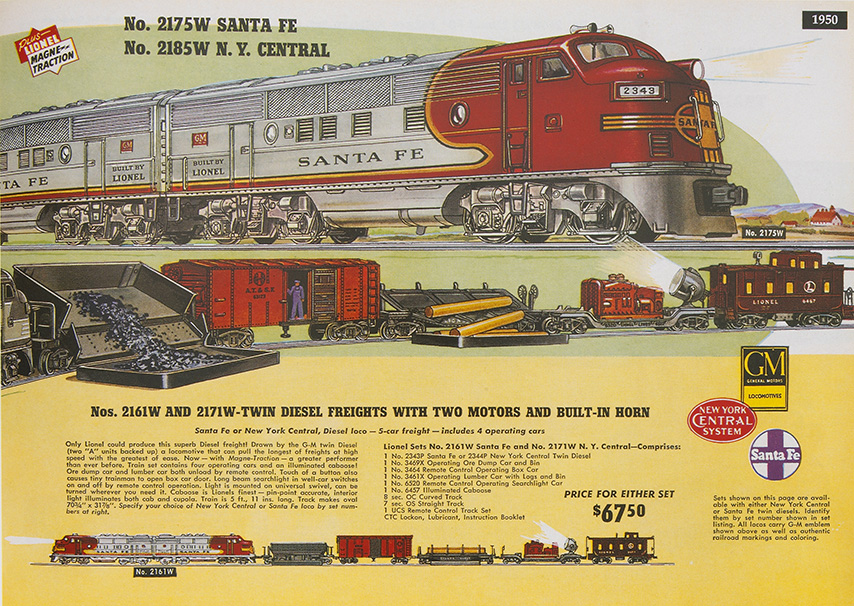
No. 2343 F3 A-A diesel locomotive, 1950-52
The Lionel Santa Fe F3 is the very image of postwar Lionel. It ranks up there with Mickey Mouse and “I like Ike” as a symbol of America in the 1950s. We think it’s the best of the best, the most important and most memorable locomotive of Lionel’s golden era.
The no. 2343 has every feature Lionel offered at the time. Of all the Santa Fe F3s, the no. 2343 is the definitive classic toy train.
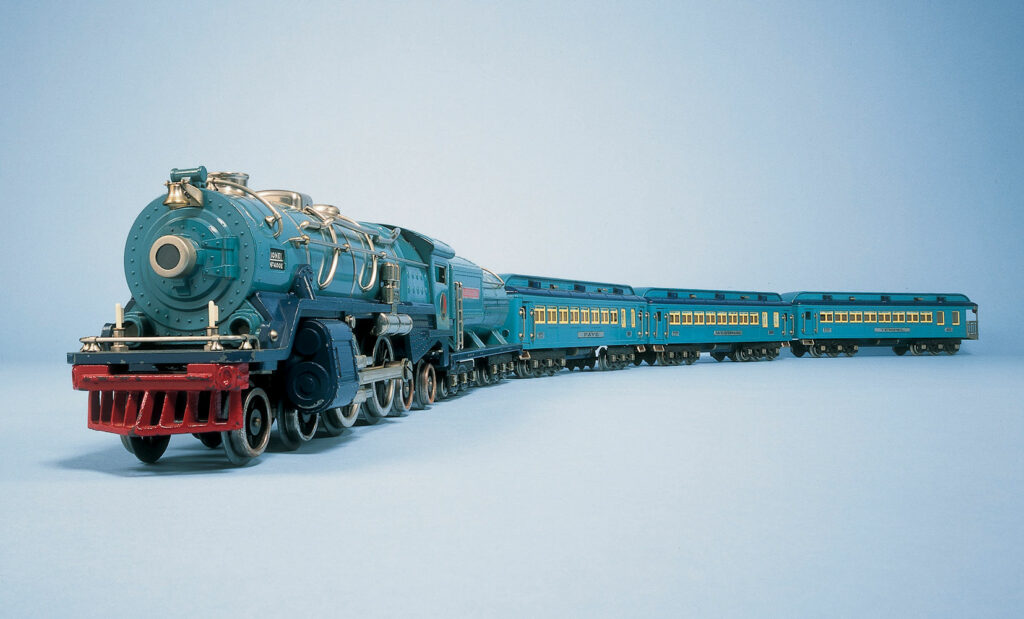
No. 400E 4-4-4 steam locomotive, 1931-39
Larger and more expensive than any Lionel locomotive previously made, this model ironically was introduced in the depths of the Great Depression. It embodied everything that was wonderful and whimsical about the classic era of Standard Gauge – shiny paint and gleaming brass, copper, and nickel trim. It pulled the best trains in the line, including the Blue Comet.
The 400E was simultaneously a remarkable achievement and an enigma. It was intentionally given a toylike appearance, yet it seemed too large to be a child’s plaything.
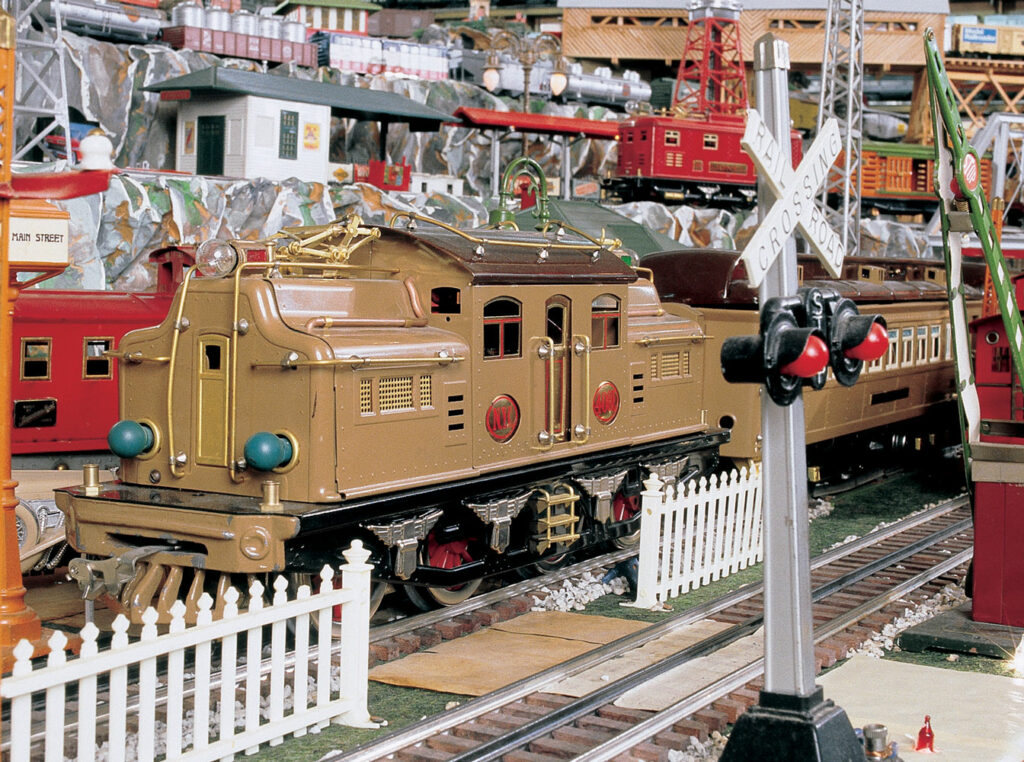
No. 408E 0-4-4-0 electric locomotive, 1927-36
The 408E was the biggest, brawniest, and most flamboyant electric-profile Standard gauge locomotive to come from the Lionel factory. It evolved from the no. 402 (1923-29), but with more features and details.
The 408E pulled the 9-foot-long Transcontinental Limited (“the State Set”), as well as many of the premium freight sets of the era. The catalog boasted that its two Super Motors gave it the power to pull a 20-car train. It embodies all the best characteristics of the Lionels of its era.
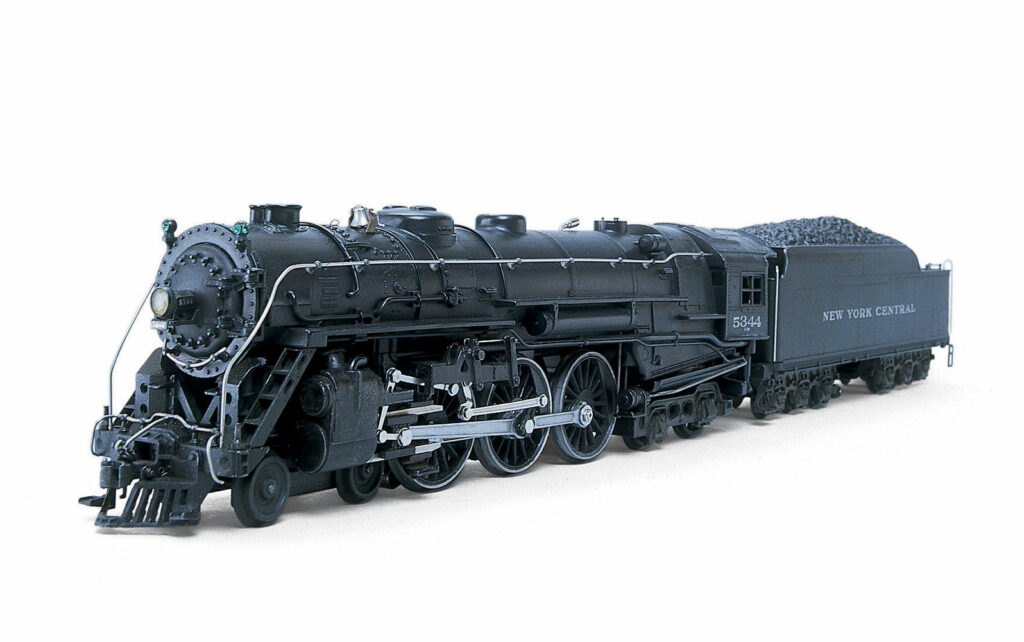
No. 700E 4-6-4 steam locomotive, 1937-42
This 1:48 scale model of the New York Central’s famed J-1 Hudson is the Lionel Corporation’s crowning achievement. Built with museum-quality accuracy, it has a smooth, powerful mechanism.
The tooling took two years to create, and it took 30 minutes for a Lionel factory worker to assemble one. Joseph L. Bonanno, head of engineering at Lionel during the Hudson’s development, said, “I doubt whether any model made for mass production will ever compare in quality and workmanship.” More than 80 years later, that claim remains justified.
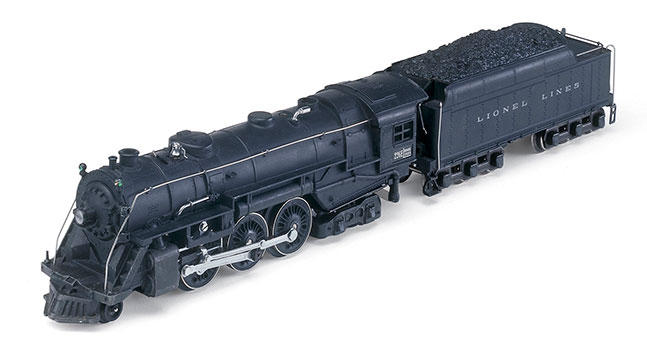
No. 226E 2-6-4 steam locomotive, 1938-41
If you’re an O-31 operator and want a smooth-running, realistic-looking steamer, the 226E is as good as it gets. Introduced a year after the no. 700E Hudson, the no. 226E was a smaller version.
Its mechanism was used in other locomotives over the next 30 years, including the nos. 646/2046/2056 Hudsons. Lionel also used the massive, detailed, and realistically proportioned boiler-cab casting in a slightly modified form on the postwar small Hudsons and the no. 726/736 Berkshires. Successors to the Lionel Corp. have used it many times since.
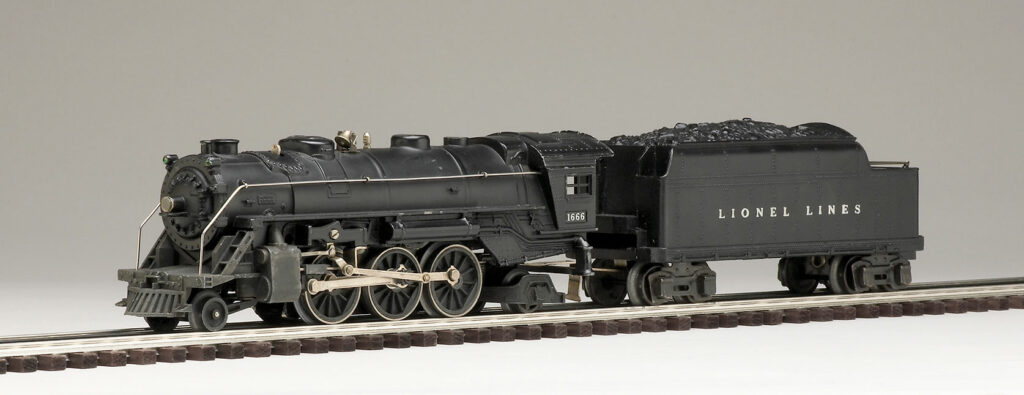
No. 1666E 2-6-2 steam locomotive, 1938-41 & 1946-47
Readers might ask, “The 1666 is an O-27 engine! How can it be one of Lionel’s greatest?” First, it’s basically a smaller version of the 226E, though the boiler and cab shapes differ a little.
Second, flexibility: Lionel used the 1666E’s boiler casting on other prewar locomotives, both in O gauge (224E, 229E) and O-27 (1664E). The 1666E is the best-proportioned of the four.
Third, the mechanism, shared with the 1668E, is excellent and has gearing that will pass through regular O gauge switches.
The boiler casting became the backbone of the Lionel steam line in the postwar and modern eras. Talk about getting a good return out of an investment!
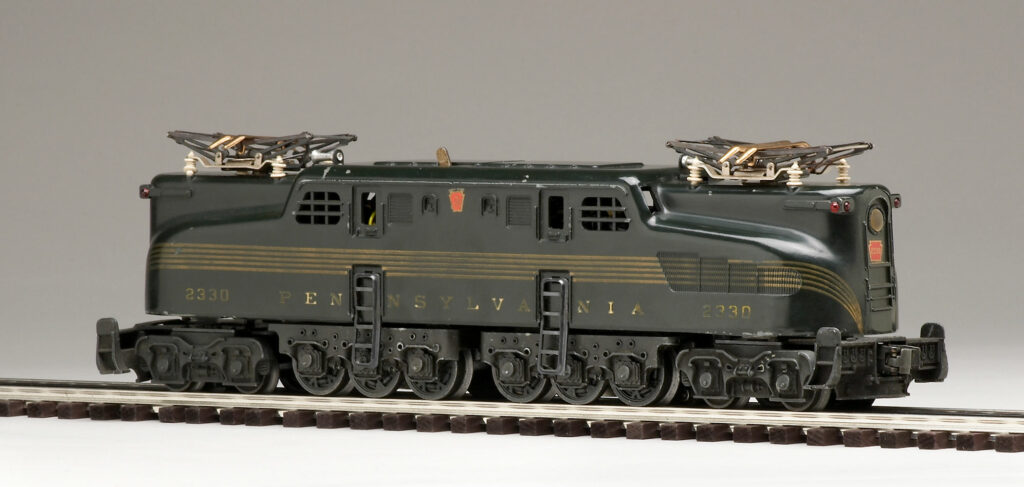
No. 2330 GG1 electric locomotive, 1950
This milestone model of the pride of the Pennsy fleet wasn’t Lionel’s first GG1, but it embodies the best features of the postwar line. With five gold stripes, two vertical motors with Magne-Traction, headlights, a horn, coil couplers, plus a beautifully rendered cast-metal body, a 2330 runs like a watch and pulls like a plow horse.
It’s the pinnacle of Lionel GG1 production, both esthetically and mechanically, and just like its prototype, looks natural racing along the main line with a fast passenger train or accelerating a long freight out of the yard.
THE DUDS
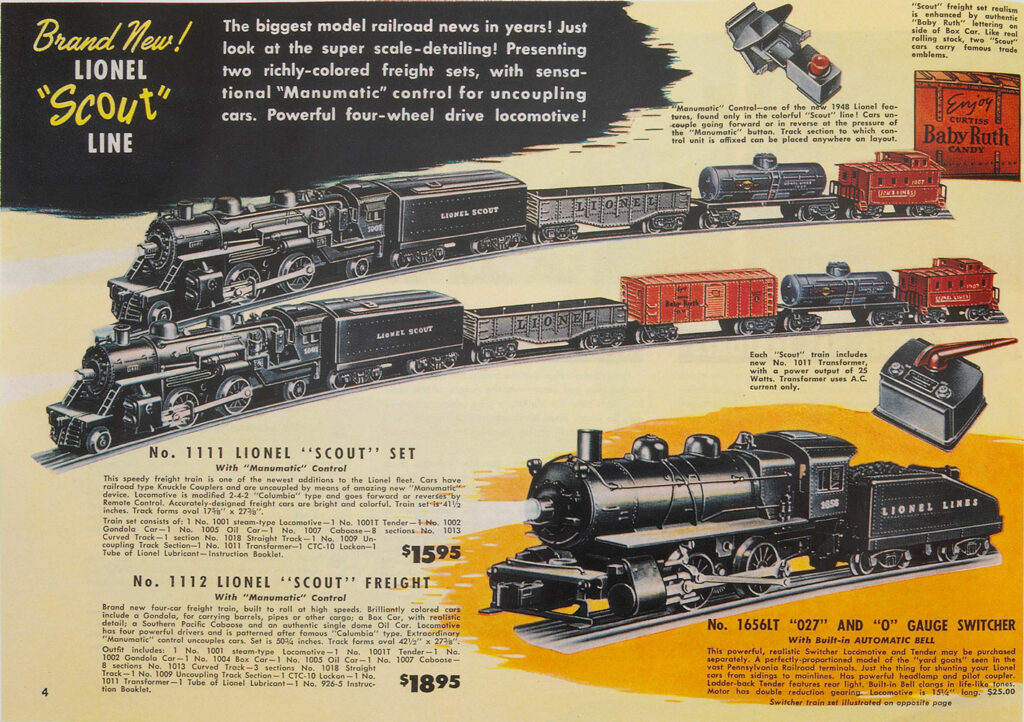
No. 1001 2-4-2 steam locomotive, 1948
Made to compete with Marx, its infamous Bakelite-encased “Lionel Scout” mechanism has a well-earned reputation for being cantankerous, obstreperous, and nearly impossible to repair. And those may be its good points.
The plastic-motored and -boilered 1001 could barely pull a three-car train and was eventually replaced in sets by the metal-boilered no. 1101 and 1110. Even if the locomotive had worked, however, Scout sets weren’t really entries into the Lionel line because of their bizarre, incompatible couplers.
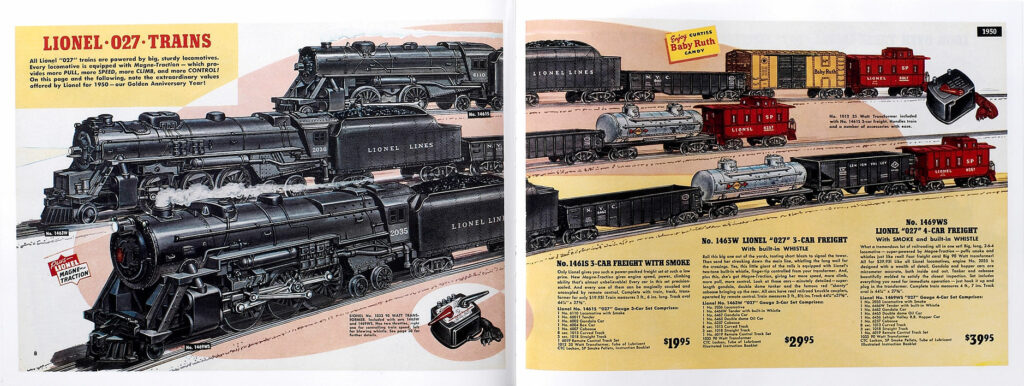
No. 6110 2-4-2 steam locomotive, 1950
The main reason for its existence was probably so that Lionel could advertise a train with smoke and Magne-Traction for $20. Underneath the no. 6110’s plain boiler was a Scout motor with small magnets added. That’s not why it’s a turkey, though.
It’s on the list because of its nearly useless smoke mechanism. Rather than using a piston to puff smoke out of the stack, the 6110 has a hole in the front of the boiler. The idea was that as the locomotive rushed down the track, air pressure would force smoke up and out.
In practice the effect was less than impressive, and even worse when the engine was in reverse. What were they thinking?

No. 2036 2-6-4 steam locomotive, 1950
To create the 2036 and the 1950s version of the 2026, Lionel engineers took one of their most reliable locomotives and turned it into a nearly unusable mess. The company made the center, flangeless sets of driving wheels on these locomotives larger than the end, flanged sets, perhaps to increase the pulling power (the center drivers on most Lionel steamers were mainly there for show).
Instead, the locomotives lifted the front drivers under many conditions, which meant that they rarely made it through the curved leg of a no. 1122 switch without derailing. Even on straight track, they twisted, teetered, and rocked. Lionel went back to normal-sized drivers on the no. 2026 (and other 1666-based locomotives) in 1953.
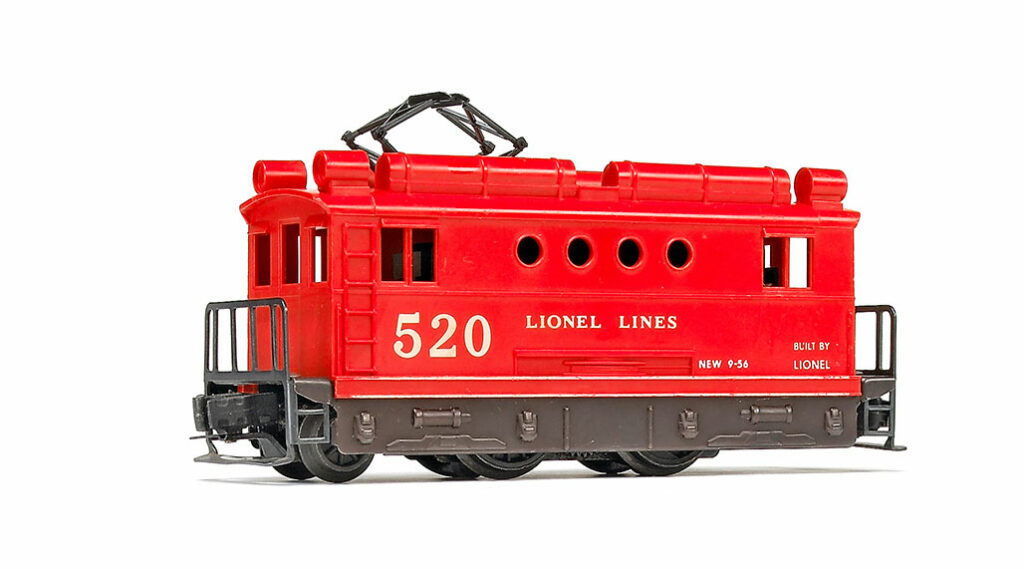
No. 520 0-4-2 electric locomotive, 1956-57
In a bizarre nod to our good neighbors to the south, Lionel chose as the prototype for its entry-level electric a GE boxcab used on mining railroads in Chile. Its main selling point was its price of $12.95, but it easily had the quality and features of locomotives costing half as much.
With an unpainted red plastic shell and no added details other than a plastic pantograph, the no. 520 wasn’t much to look at. With no horn and no headlight, it didn’t have much in the way of features. And with a modified (and Magne-Traction-free) steam-locomotive mechanism in a lightweight sheet-metal frame, it didn’t pull very well. Its lightweight trailing truck derailed so often that many operators removed it.














Hard to argue with the 7 great locomotives selected by the writers. However I would add 2 Post War classics that I believe should have been included.
The 1946 Berkshire (paired w/the 2426W to scale tender) featured twin worm gear drive, elaborate connecting rods and detailed stanchions. It was and still is a highly desirable addition to anyone’s collection.
The other is the 1954 FM Lackawanna Train Master. It’s true 1:48 scale with twin Pullmor motors was arguably the best pulling locomotive ever produced by Lionel.
I am fortunate to have both as part of my collection.
Even though I never owned a Lionel set as a kid (my dad bought an American Flyer set for my brother and me) I recently purchased a 1947 GG-1, #2332 from EBay. The information the seller provided said it was restored some years back but it runs really well. I still have the American Flyer set but I guess I’ll have to get some O gauge track and a couple of cars so the GG1 can earn it’s keep!
Other than the wrong graphic for the 6110, this series is right on: including my favorite prewar steamer, the 226E. All I would add in the “great” list is the 2056 steamer, which used the Berkshire/226 body. The six wheel drive looked much more appropriate than the eight wheel drive jammed into the Berkshire’s body. To me, the 2056 is the most handsome of the postwar steamers.
Hi Peter, thanks for the catch. The graphic for the 6110 has been updated.
Another well written article. I have the 2036 outfit. It was my first Lionel train. While I never had the issues with the center drive wheels, it’s other great design flaw was removing the smoke unit. So they took the reliable 2026 and added Magnetraction which in and of itself would have been great, but instead they removed the other great feature, smoke. Go figure…